Location
The Atlantic coastline and outer Shannon estuary of south County Clare, western Ireland, are renown for their world-class exposures of deep water, slope and delta deposits dating from the Upper Carboniferous period (c.340 million years old). In addition, the area includes spectacular examples of soft sediment deformation features (structures produced after the sediment was deposited by disturbance when still poorly consolidated). One of the main attractions of the area is that high sea cliffs provide large, 'reservoir-scale' slices through the various deposits. This is thus a well-trodden area for both academic and industry field parties seeking a rare glimpse of how sedimentary rocks are arranged at 100's m to km length scales. In recent years this area of Co. Clare has also become a test bed for sequence stratigraphy, with far-reaching applications in the search for and exploitation of hydrocarbons and understanding how basins fill.
Visited localities and aspects of interest:
- Loop Head: introduction to the Clare Basin. Large-scale overview of the Ross Sandstone Formation turbidites in large cliff exposures. High net-to-gross layered and amalgamated turbidite sheet systems. Bed continuity.
- Ross and Bridges of Ross: turbidite architecture and nature and origin of Ross Slump. Sand volcanoes. Megaflutes and their origin. Palaeocurrents and basin filling.
- Gull Island Formation near Cross. Turbidites and remobilisation in base-of-slope and slope settings. Upward transition from the basin floor to slope to the shallow water deltas. Large-scale gravity-induced deformation.
- Doonlicky Cyclothem, Foohagh Point, south of Kilkee. Delta front growth faulting and its impact on mouth bar sand distribution.
- Diamond Rocks, south of Kilkee. Mud diapirism and its significance in the upper part of the Tullig Cyclothem.
- Spanish Point, north of Quilty. Evidence for shelf exposure and re-flooding. Interfluve and maximum flooding surfaces. Relative or eustatic changes in sea level?
- Trusklieve: the Tullig cyclothem, sequence stratigraphic subdivision and origin of the Tullig Sandstone. Style of delta system. Geometry and nature of mouth bars. Distributary channels or incised valleys?
Leader: Peter Haughton (School of Geological Sciences, University College Dublin)
Organisers: Chris Davis and Marco Patacci (School of Geological Sciences, University College Dublin)
|
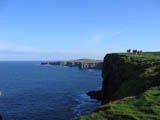  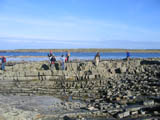  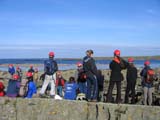  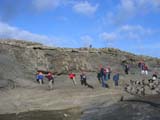  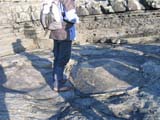   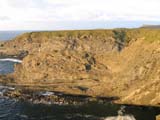  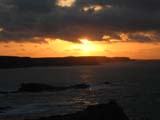 |